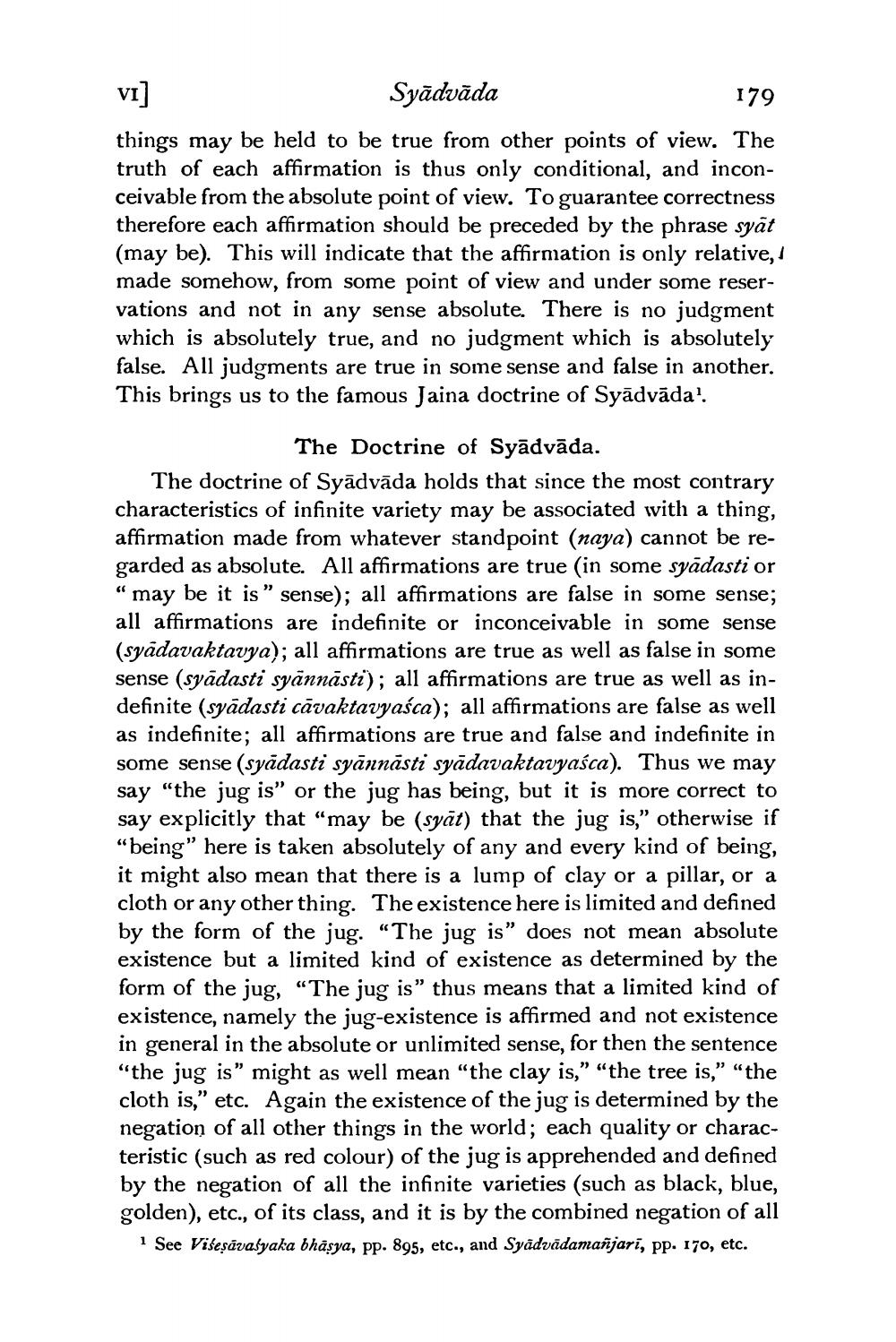________________
VI]
Syadväda
179
things may be held to be true from other points of view. The truth of each affirmation is thus only conditional, and inconceivable from the absolute point of view. To guarantee correctness therefore each affirmation should be preceded by the phrase syāt (may be). This will indicate that the affirmation is only relative, made somehow, from some point of view and under some reservations and not in any sense absolute. There is no judgment which is absolutely true, and no judgment which is absolutely false. All judgments are true in some sense and false in another. This brings us to the famous Jaina doctrine of Syādvāda1.
The Doctrine of Syādvāda.
The doctrine of Syādvāda holds that since the most contrary characteristics of infinite variety may be associated with a thing, affirmation made from whatever standpoint (naya) cannot be regarded as absolute. All affirmations are true (in some syādasti or 'may be it is" sense); all affirmations are false in some sense; all affirmations are indefinite or inconceivable in some sense (syadavaktavya); all affirmations are true as well as false in some sense (syādasti syännästi); all affirmations are true as well as indefinite (syädasti cavaktavyaśca); all affirmations are false as well as indefinite; all affirmations are true and false and indefinite in some sense (syadasti syännästi syadavaktavyaśca). Thus we may say "the jug is" or the jug has being, but it is more correct to say explicitly that "may be (syat) that the jug is," otherwise if "being" here is taken absolutely of any and every kind of being, it might also mean that there is a lump of clay or a pillar, or a cloth or any other thing. The existence here is limited and defined by the form of the jug. "The jug is" does not mean absolute existence but a limited kind of existence as determined by the form of the jug, "The jug is" thus means that a limited kind of existence, namely the jug-existence is affirmed and not existence in general in the absolute or unlimited sense, for then the sentence "the jug is" might as well mean "the clay is," "the tree is," "the cloth is," etc. Again the existence of the jug is determined by the negation of all other things in the world; each quality or characteristic (such as red colour) of the jug is apprehended and defined by the negation of all the infinite varieties (such as black, blue, golden), etc., of its class, and it is by the combined negation of all
1 See Viseṣāvasyaka bhāṣya, pp. 895, etc., and Syadvādamañjarī, pp. 170, etc.
"




